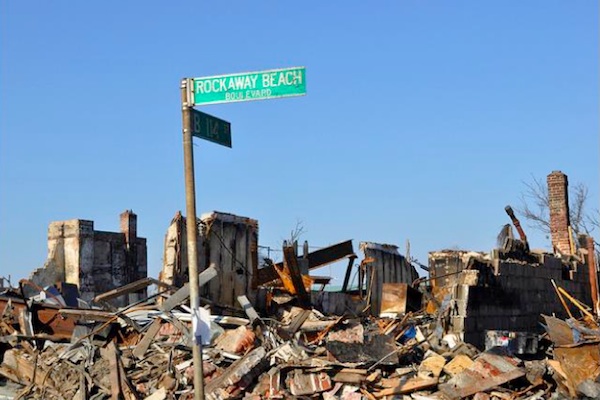
Photo by: APA-NYM
Two weeks after superstorm Sandy slammed the Rockaways, a team of planners descended on the peninsula to identify immediate problems and long-term threats to businesses and residents. In a report released Thursday, the American Planning Association-New York Metro chapter found that those pressing concerns and the deeper issues were inextricably intertwined.
While 90 percent of businesses in the Rockaways closed in the immediate wake of the storm, some 60 percent were still closed four or five months later, according to the report, which was prepared for the Rockaway Development and Revitalization Corporation.
It stands to reason that most of those firms remain shuttered now, more than six months after the storm surge tossed cars, triggered fires, knocked out power and coated the narrow strip of land with silt.
The proximate cause for the business bust in the Rockaways is, obviously, the storm, but the APA report notes unique features of life there that made the area more vulnerable to the storm and limit its ability to recover from it.
For instance, Rockaway businesses always suffered a lot of “leakage,” meaning residents who should have been their customers instead shopped somewhere else; according to APA, businesses on the peninsula could provide only 30 percent of what residents wanted to buy.
But because of the physical isolation of the place, Rockaway businesses were totally dependent on local residents for business; it wasn’t like people were driving there from the mainland to shop.
So when businesses were slow to come back online after the storm, shoppers were all too ready to shop somewhere else, starving those few firms that did try to reopen.
While some customers were shopping elsewhere, others were living elsewhere: Some business owners told the APA that much of their customer base was still gone (a concern City Limits reported on back in December). Chalk that up to the lack of mass transit to the area and the lower-than-average income in the area.
At the same time, some residents may be holding off their return—or perhaps planning to leave again—as they figure out whether they can afford the property upgrades or higher insurance premiums that will be required now. “A crucial consideration residents face in the post-Sandy recovery period is whether or not they will be able to afford the almost assured increase in insurance rates if they chose to remain in Rockaway over the long-term,” the report finds.
Meanwhile, because of the low incomes on the peninsula, businesses operate with margins too low to take on debt to make repairs: “Many businesses were not eligible to apply public assistance programs due to poor credit scores and limited resources which hindered their ability to pay back loans.” The complexity of the application process was also an issue.
Financing was the chief need identified by local businesses; many need tens of thousands of dollars, or more. So the report calls for “a staffed, mobile office, similar to New York State Department of Labor’s One-Stop Career Center, to educate and provide technical assistance to businesses applying for grants, loans, and other resources and funding opportunities.” It also advocates for reduced Long Island Railroad fares to the area, and more bus service.








